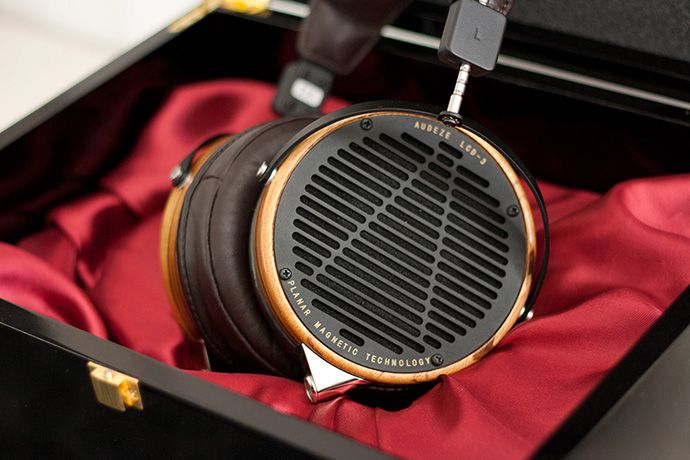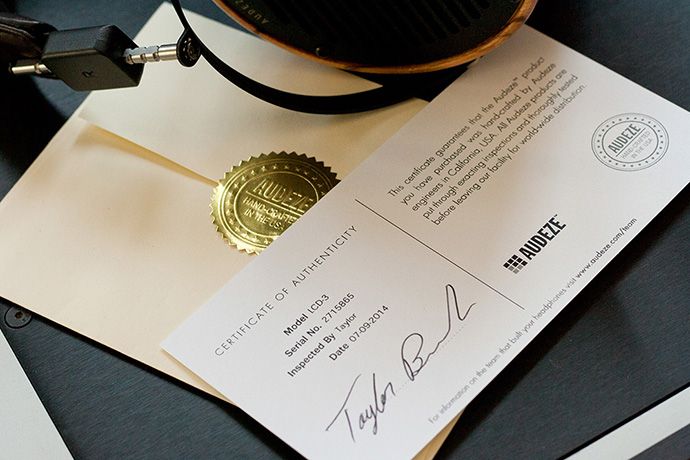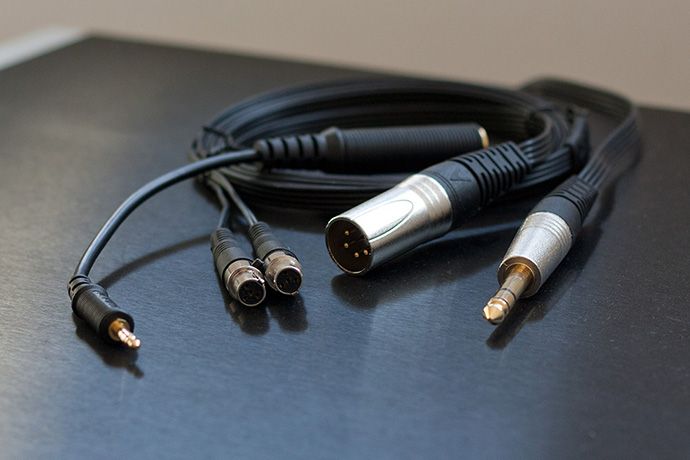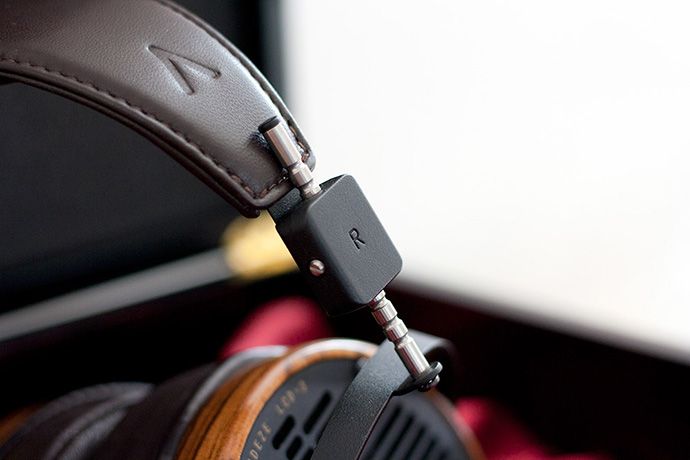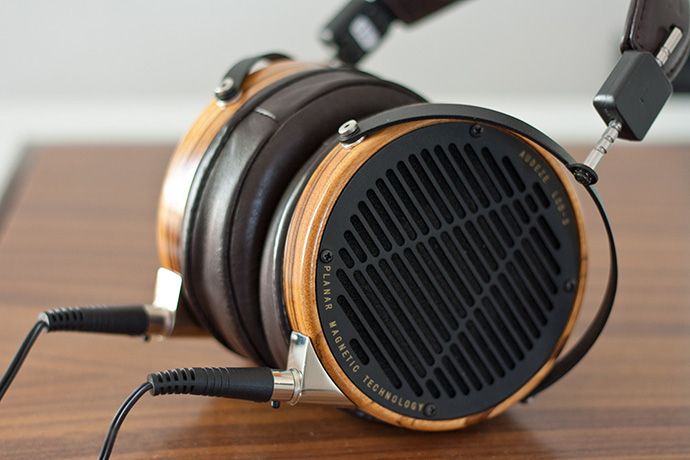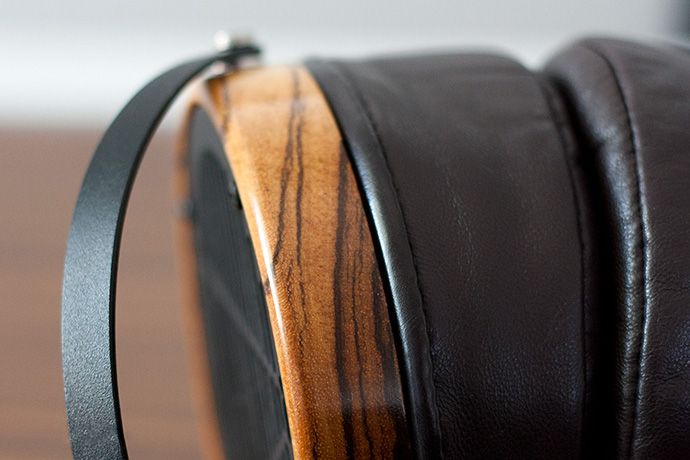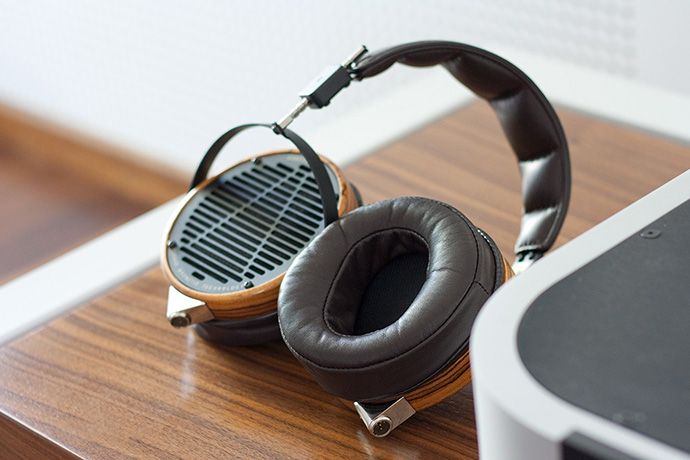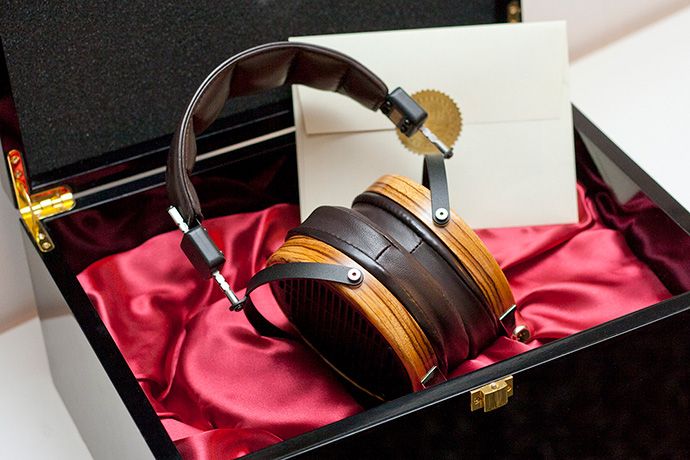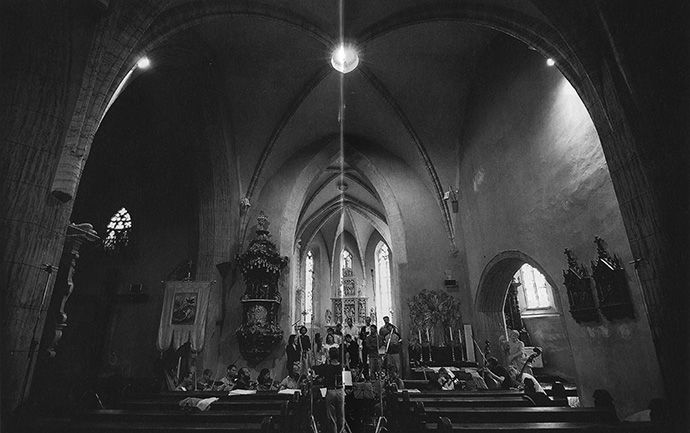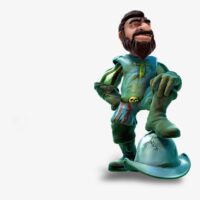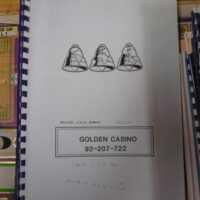Audeze LCD 3 – Complete Review & Hearing Test
The headphones have never been more popular. They are used in urban transport, aircraft, running through nature, lying on the beach, at home, and who knows how many different ways. The offer is enormous today and thousands of manufacturers are trying to convince customers that their headphones are exactly what you are looking for. In that chaos, it is difficult to separate the quality from a poor quality product, so it turns out that the one that invests the most in marketing is ultimately winning.
However, there are producers whose focus is primarily on quality, and then on everything else. One of those is American Audeze, located in Costa Mesa, California. It is a small company that can easily be described as family manufacture.
The Audeze headphones design combines the best of two worlds – engineering and material. Specifically, the design is, on the one hand, accessed with great knowledge of psychoacoustics and the creation of speaker units, while on the other, they use the best available materials. As such, they are recognized among many audiophiles, but also among the professionals who use them as a reference tool in studios.
I met Audeze’s headphones last year in Munich where I had the opportunity to listen to them for the first time as part of the High-End Fair, in fact at a nearby hotel where another parallel HI-FI fair was held. That still needs to be taken with a reserve because I was limited by the time and the conditions I listened to.
For the test, I have chosen the best, at the same time the most expensive headphones Audeze has on offer – the LCD-3 model.
I had a strong curiosity to hear what sounds like a hundred times more expensive headphones than the headphones that most people are using. After all, if someone asks me tomorrow if I want to try Pagani Huayro, I would sit on the wheel without thinking about the price, that is, for that amount I can buy 200 or more cars I drive.
The Package
As expected from a luxury product, and this certainly is, the packaging is at an enviable level. It’s not spectacular and does not reveal anything new but leaves the impression that you have bought something special. The black, glossy lacquered wooden box, the red-coated interior, the handwritten envelope with a signed certificate and serial number, a wax bottle with the associated polishing pad, and the ultimate detachable (XLR) cable with adapters make the headphones a worthy companion.
Manufacture
As I noted in the introductory section, superior materials were used. The outside of the headphones is made of hand-selected and processed Zebrano wood, while the interior and the headband are covered with lambskin. If for some reason you do not like smooth skin, there is a possibility of buying a suede skin version. Plastic takes up only a small share here. Along with wood and leather, the main parts are precisely processed machined metal parts. You can look up and pick up a magnifying glass, but you can hardly find any manufacturing errors. Making it just – flawless!
Technology
Unlike most headphones using dynamic speaker units (similar to those in classic speakers), the LCD-3 uses planar units that are found in magnetostatics or electrostatic loudspeakers. While dynamically working on the principle of a membrane that is triggered by the excitation of the coil in the magnetic field and thus the vibration creates sound, the planar headphones are made from the membranes that are located in the magnetic field between the two electrodes. Depending on the polarity of the magnetic field and the variability of the electrical signal the membranes move and produce sound.
This technology is applied to the LCD-3 headphones from the belief that planar units offer far less distortion than the dynamic. Finally, those are ‘Lotus’ units of their production which Audeze is particularly proud of.
Comfort
Headphones without the cable weigh about 550 grams, which is a problem if you are planning to listen to more hours. Specifically, this weight is not negligible and after about an hour and a half of the listening, the headphones become the burden that requires support. However, it is expected that with such headphones you can comfortably bend into the chair, head back, and allow the armchair to become part of the musical performance. Additionally, fatigue will not come before you hear any music piece to the end, and it rarely lasts longer than an hour or two. Otherwise, the headphones are extremely comfortable, and regardless of their robustness, they sit perfectly on the head and ears.
Sound
If you feel happy enough that you have come out of the consumer class and you have had the opportunity to listen, or even better, you have bought the headphones for up to $300 and you are delighted to hear that you finally know how good the headphones should sound, I must disappoint you – such headphones are light years away from the LCD-3 headphones.
This is a sound that is not highlighted in any part of the spectrum, it is closely connected from beginning to end, from the deepest to the highest tones. Such a uniformity on the first leaves the impression that you are listening to an uninteresting, or rather, unattractive product. However, with more careful and long-lasting listening, it becomes clear that you are scary approaching the ideal of high-fidelity sound.
- Astonishingly lifelike sound quality: The LCD-3 is perfect for listeners...
- Diaphragms thinner than a human hair. We use space-age materials to...
- Patented Fazor Elements guide internal soundwaves to avoid resonances,...
- Hand crafted in California: Every LCD-3 headphone is engineered and...
I stayed surprised at how Audeze LCD-3 headphones were able to convincingly convey the sound of the instruments. That naturalness entails a high degree of involvement because sensors in the brain tell you that you are listening to the right thing. You can enjoy the most expensive orange juice with pieces of pulp, but when someone eats a fresh orange, it’s hard for you to cheat the tongue sensations. The same thing is here. You simply know that you are listening to what is known to you from the natural environment, especially if you have experience how some live instruments sound.
Unlike listening to music from the HI-FI system where the sound stage is much easier to recall and where the separation of the instruments can be precisely defined, the headphones are mostly absent on that question. Reasons we should look for in the technology itself and in the way we perceive the stereo effect. While sitting in front of the HI-FI system, listening to the sum of sounds, both from the speakers and from those who are bouncing off the walls, the ceiling, the floor, and everything in the room, the headphones ‘work independently’ placed directly on the ears. Ultimately, it is far easier to get a sense of sound volume than in headphones.
Still, the LCD-3 goes miles away and offers just the space recreation and excellent separation of the instruments. Usually, the headphones sound is in your head and it’s hard for you to visualize what’s going on in front of you. In other words, you hear, but you do not see. LCD-3 with some miracle can move that picture forward and create the illusion of having an orchestra in front of you.
I deliberately set the stage and separation apart because I believe that they are the foundation of creating feelings to attend a live event, that is, that you are there. An excellent example is the masterpiece of Vladimir Godar, Mater (ECM New Series, 2006), featuring Iva Bittova (vocals), Milo Valent (violin, viola), Bratislava Conservatory Choir and Baroque ensemble Solamente Naturali under the direction of Marek Stryncla. The album was recorded in 2005 in the Gothic church of St. George, built in the 13th century in the small Slovak town of Svaty Jur.
What I’ve found impossible to do until today, LCD-3 achieved, which was extremely faithful to the sense of space of the church where vocals and instruments were brilliantly drawn. Such a feeling is comparable to listening to a true high-end HI-FI system that can capture instruments in the space and give them enough air to fit the room’s acoustics realistically. If you’ve had the opportunity to listen to instruments or vocal performances in churches you probably remember the swing caused by reflections, ie. larger bare surfaces. Here the echo is not expressed as those in the cathedrals, but it is present and indicates where the work is performed.
On the other hand, the sophisticated, fluttering, and flawlessly steady voice of Iva Bittova has been perfected in both compilation and instrumental performances. A fine and precise definition has certainly contributed to the very footage that is exceptional, as well as to the LCD-3 headphones that can convincingly reproduce the human voice. Everything that delivers the voice of Iva Bittova, the tone range, the dynamism, the grandeur of the one and the opulence on the other side, is placed in front of you and offers you an unforgettable sound experience.
The choir also takes realistic gaps and does not break down or mix with the ensemble at one time. Takes a solid backing position and it stays until the end of the album. The solo performances by Milo Valent, Juraj Kovac, and Iva Bittova are a special treat as apart from the fact that they stunning the performance itself, they glow in the space and give them the feeling that they are only performed for you.
You need to experience and hear the composition of Maykomashmalon (the first and the last), the incredible symbiosis of the viola, the cello and the human voice that gathers like a ghost through the church, gently touching the walls and your deepest feelings. You sit in the first rows and devoted, almost helpless, watching what is happening to you. At this point, the LCD-3 headphones are fully integrated into the music. Fantastic!
It may seem strange, but I was almost ready to wrap my headphones after Vladimir Godar, return them to the distributor and start writing the text. I did not do it, but even if I am, I doubt that I would miss something in the context of the evaluation. Anyway, I continued with the music material to get the confirmation of the initial impressions, but frankly, and to extend the pleasure of listening to the LCD-3 headphones. Besides, God knows when I will listen to them again and where.
One more album left me in a beautiful memory, more precisely the composition of Laco Delibes, Flower Duet performed by Anna Netrebko and Elina Garanča (The Opera Gala – Live from Baden-Baden, Deutsche Grammophon, 2007). This is an excellent performance of the most sophisticated soprano and mezzo-sopranos of today. The duet is characterized by an excellent layer and balanced cooperation in which the voices are perfectly alternated through the libretto. The orchestra follows the singers closely and provides a solid foundation for vocal interpretation.
To enjoy this performance, or better, record, you will need to reach for the ultimate HI-FI system that will allow you to have faithful reproduction and insight into what was happening on the stage of Baden-Baden Festspielhaus that evening.
If you look at the attached video, you will notice that during the performance of Anna Netrebko and Elina Garanča they move on the stage, bend to each other, turning heads to finally leave the stage. All this is greatly recorded with a microphone and only with listening to the recording without watching the video, you can create a picture of the illusion of what is happening.
However, as I wrote earlier, to have such a feeling, you must feel the space in which the work is performed, you must have a clear separation of vocals and instruments. Unfortunately, on headphones, this is an almost impossible mission. I say, almost because Audize LCD-3 can realize that sound magic and that’s what makes them unique.
However, to avoid space and separation, I have to point out the other benefits of LCD-3 headphones too, and among them is also an exceptional dynamic that also makes a critical part of the overall impression of faithful reproduction. These transitions, from the quietest to the loudest parts were excellent in the composition of Magnificat, Arvo Pärt from the album Da Pacem (Harmonia Mundi, 2006), through another vocal interpretation in which the male and female voices of the choir were exchanged, as well as through Riverside, Joshua Redman from the Momentum album (Nonesuch, 2005).
In the latter composition, the drum sound has been so faithfully transmitted that I remained in wonder. I did not hear anything similar from the headphones earlier and I thought it was impossible. Solid, deep, and most important, very precise. This energy was interwoven with the saxophone of Joshua Redman in a dynamic vanguard that would not be missed by either very expensive HI-FI systems.
Summing up the overall impression, ie. the sound of the Audeze LCD-3 headphones no flaw can be attributed to them. This ability to reproduce sound through fine saturated texture, transparency, and detail, really prefers and leaves no room for doubt in the product itself. In the end, it was clear why LCD-3 was used in music studios as a reference tool.
√ Check The Price and Read Customer Reviews √
Conclusion
I deeply believe that all this what I write could go a few more steps than I had in my case if I had a better headphone amplifier than the one built into the Class CP-800 preamplifier. Far from being a bad one or a midrange, but a separate amplifier of the same or similar value of the headphones itself would show much more. There is no doubt about it. But now we come to an interesting moment because if my claims are accurate the price of this pleasure is not $2000 but twice as much. So, the question arises as to whether it is worthwhile to invest that amount in the headphones when with this amount of money you can buy excellent speakers? Exactly, I can. For about 4000 $, and especially second-hand offerings, you can buy not great but already serious high-end speakers. However, it is a big question as to how these speakers will fit into your space and whether you will be able to deliver such high-fidelity sound as the Audeze LCD-3 headphones deliver, regardless of the pedigree. I was wondering if it would not, or to reach the audio capabilities of the LCD-3 headphones you would have to invest significantly more into your HI-FI system and even the speakers. I do not want to conclude and leave the impression that this is a best-buy product, far from it. What I want to emphasize is that if you want to get close to high-quality sound and you do not want to sell a kidney, then the concept of listening to music through the headphones is right for these or those reasons, seriously consider the Audeze LCD-3 headphones. It could be the last piece of HI-FI equipment you’ll ever buy.
The user manual can be downloaded here: Audeze LCD-3 Owners Manual
Audeze LCD-3
Pros
- Lifelike detail
- Near perfect frequency response
- Immense stereo image
- Excellent balance
- Gorgeous, ergonomic design
Cons
- Expensive
- A little heavy
Audeze LCD-3 Specifications
- Style: Over-ear, open-back
- Transducer type: Planar Magnetic
- Magnetics structure: Proprietary magnet array
- Phase management: Fazor
- Magnet type: Neodymium N50
- Diaphragm type: Ultra-thin
- Transducer size: 106 mm
- Maximum power handling: 5W RMS
- Maximum SPL: >130dB
- Frequency response: 10Hz – 50kHz
- THD: <0.1% @ 100dB
- Impedance: 110 ohms
- Sensitivity: 101 dB/1mW (at Drum Reference Point)
- Minimum power requirement: >100mW
- Recommended power level: >250mW
- Weight: 635g

